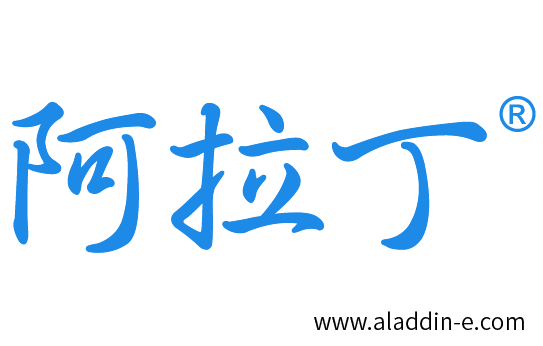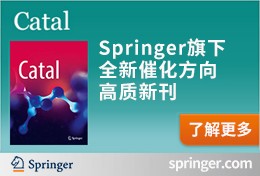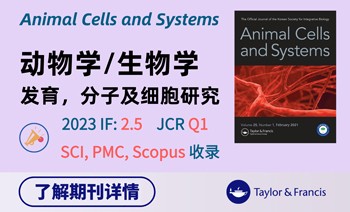当前位置:
X-MOL 学术
›
Hydrometallurgy
›
论文详情
Our official English website, www.x-mol.net, welcomes your
feedback! (Note: you will need to create a separate account there.)
Lipophilic EDTA-based ligands in different diluents for the extraction of rare earths: Preliminary results with Nd(III), Dy(III) and Pr(III) in chloride and nitrate media
Hydrometallurgy ( IF 4.8 ) Pub Date : 2024-10-22 , DOI: 10.1016/j.hydromet.2024.106415 Tamir Sukhbaatar, Raphaëlle Piton, Fabrice Giusti, Guilhem Arrachart, Magali Duvail, Aarti Kumari, Santosh Daware, Shally Gupta, Sriram Goverapet, Sushanta Kumar Sahu, Beena Rai, Stéphane Pellet-Rostaing
Hydrometallurgy ( IF 4.8 ) Pub Date : 2024-10-22 , DOI: 10.1016/j.hydromet.2024.106415 Tamir Sukhbaatar, Raphaëlle Piton, Fabrice Giusti, Guilhem Arrachart, Magali Duvail, Aarti Kumari, Santosh Daware, Shally Gupta, Sriram Goverapet, Sushanta Kumar Sahu, Beena Rai, Stéphane Pellet-Rostaing
A separation method for the recovery of neodymium(III) from two different media, chloride and nitrate, by implementing solvent extraction technique with a novel lipophilic diamide derivative of ethylenediamine tetraacetic acid (EDTA), namely 2,2’-N ,N ′-didecyl-dioxo-N ,N′ ,N″ ,N″’ -tetraazatetratriacontane-N″ ,N″’ -diyl diacetic acid (H 2 E-4C 10 n -dodecane:n -octanol mixture (DOm) as non-polar diluents. Further investigations aiming at determining operational parameters associated with the befitted extractant systems were conducted at pH ranging from 2 to 4 in chloride and nitrate media. A pH-dependent performance of the proposed systems revealed loading capacity peaking at pH = 3 with the respective values of 1.7 and 2.0 g L−1 in nitrate and chloride media. The extraction efficiency, the distribution coefficients, and the separation factor (E %, D and SF , respectively) were determined for an equimolar mixture of neodymium (Nd) and two other potential competitive lanthanides, namely dysprosium (Dy) and praseodymium (Pr). The best selectivity was observed in the chloride medium at pH = 4 yielding SF Nd/Pr = 1.48 and SF Nd/Dy = 2.03. Neodymium-to-extractant stoichiometry was evidenced in chloroform to be 1:1 H2 E:Nd at pH = 2. Thermodynamic constants related to the considered extraction equilibrium have been determined by using the Van't Hoff relation and the slope analysis method. It appeared within the selected pH-range that the mechanism of the Nd3+ transfer was strongly influenced by the nature of the diluent. This was illustrated by the enthalpy-driven transfer when Nd3+ was extracted with the H 2 E-4C 10 H 2 E-4C 10 3+ involved mainly the participation of both the amide and carboxylic functional groups. The transfer of the cation to the organic phase might occur through the formation of the Nd(HE )A 2 complex (where A is either a nitrate or a chloride anion), allowing for the lowest associated standard Gibbs free energy of transfer (−28 < ΔG ° < −24 kJ mol−1 ) regardless of the aqueous feed.
中文翻译:

用于提取稀土的不同稀释剂中的亲脂性 EDTA 基配体:氯化物和硝酸盐介质中 Nd(III)、Dy(III) 和 Pr(III) 的初步结果
通过使用乙二胺四乙酸 (EDTA) 的新型亲脂性二酰胺衍生物,即 2,2'-N,N′-二癸基-二氧代-N,N′,N“,N”'-四氮杂四三碳烷-N“,N”'-二乙酰二乙酸 (H2E-4C10),实施溶剂萃取技术,从氯化物和硝酸盐两种不同介质中回收钕 (III) 的方法已经研究过。初步筛选结果表明,二酰胺在 1,3-二异丙基苯 (DiPB) 和 93:7 v:v 正十二烷:正辛醇混合物 (DOm) 中作为非极性稀释剂的溶解度 (约 15 mM)。在氯化物和硝酸盐介质的 pH 值为 2 至 4 的情况下,进行了旨在确定与所拟合萃取剂系统相关的操作参数的进一步研究。所提出的系统的 pH 依赖性性能显示,在氮酸盐和氯化物介质中,负载量在 pH = 3 时达到峰值,分别为 1.7 和 2.0 g L-1。测定钕 (Nd) 和其他两种潜在竞争性镧系元素(即镝 (Dy) 和镨 (Pr))的等摩尔混合物的提取效率、分布系数和分离因子 (分别为 E%、D 和 SF)。在 pH = 4 的氯化物培养基中观察到最佳选择性,产生 SFNd/Pr = 1.48 和 SFNd/Dy = 2.03。钕-萃取剂化学计量法在氯仿中证明在 pH = 2 时为 1:1 H2E:Nd。与所考虑的萃取平衡相关的热力学常数已通过使用 Van't Hoff 关系和斜率分析方法确定。在选定的 pH 范围内,Nd3+ 转移机制似乎受到稀释剂性质的强烈影响。 当使用 H2E-4C10-Dom 系统(脂肪族稀释剂)提取 Nd3+ 时,焓驱动转移说明了这一点,而当使用 H2E-4C10-DiPB 系统(芳香族稀释剂)进行提取时,转移变为熵驱动。Nd3+ 的络合主要涉及酰胺和羧基官能团的参与。阳离子向有机相的转移可能通过形成 Nd(HE)A2 络合物(其中 A 是硝酸盐或氯化物阴离子)来实现,无论水性原料如何,都允许最低的相关标准吉布斯自由转移能(-28 < ΔG° < -24 kJ mol-1)。
更新日期:2024-10-22
中文翻译:

用于提取稀土的不同稀释剂中的亲脂性 EDTA 基配体:氯化物和硝酸盐介质中 Nd(III)、Dy(III) 和 Pr(III) 的初步结果
通过使用乙二胺四乙酸 (EDTA) 的新型亲脂性二酰胺衍生物,即 2,2'-N,N′-二癸基-二氧代-N,N′,N“,N”'-四氮杂四三碳烷-N“,N”'-二乙酰二乙酸 (H2E-4C10),实施溶剂萃取技术,从氯化物和硝酸盐两种不同介质中回收钕 (III) 的方法已经研究过。初步筛选结果表明,二酰胺在 1,3-二异丙基苯 (DiPB) 和 93:7 v:v 正十二烷:正辛醇混合物 (DOm) 中作为非极性稀释剂的溶解度 (约 15 mM)。在氯化物和硝酸盐介质的 pH 值为 2 至 4 的情况下,进行了旨在确定与所拟合萃取剂系统相关的操作参数的进一步研究。所提出的系统的 pH 依赖性性能显示,在氮酸盐和氯化物介质中,负载量在 pH = 3 时达到峰值,分别为 1.7 和 2.0 g L-1。测定钕 (Nd) 和其他两种潜在竞争性镧系元素(即镝 (Dy) 和镨 (Pr))的等摩尔混合物的提取效率、分布系数和分离因子 (分别为 E%、D 和 SF)。在 pH = 4 的氯化物培养基中观察到最佳选择性,产生 SFNd/Pr = 1.48 和 SFNd/Dy = 2.03。钕-萃取剂化学计量法在氯仿中证明在 pH = 2 时为 1:1 H2E:Nd。与所考虑的萃取平衡相关的热力学常数已通过使用 Van't Hoff 关系和斜率分析方法确定。在选定的 pH 范围内,Nd3+ 转移机制似乎受到稀释剂性质的强烈影响。 当使用 H2E-4C10-Dom 系统(脂肪族稀释剂)提取 Nd3+ 时,焓驱动转移说明了这一点,而当使用 H2E-4C10-DiPB 系统(芳香族稀释剂)进行提取时,转移变为熵驱动。Nd3+ 的络合主要涉及酰胺和羧基官能团的参与。阳离子向有机相的转移可能通过形成 Nd(HE)A2 络合物(其中 A 是硝酸盐或氯化物阴离子)来实现,无论水性原料如何,都允许最低的相关标准吉布斯自由转移能(-28 < ΔG° < -24 kJ mol-1)。






























 京公网安备 11010802027423号
京公网安备 11010802027423号